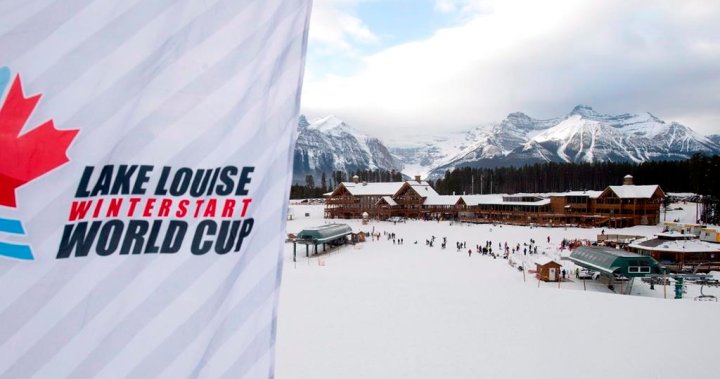Lake Louise Ski Resort is the “front-runner” to continue hosting the men’s World Cup downhill if changes are made to race operations, Alpine Canada’s chief executive officer says.
The Alberta ski resort west of Calgary in Banff National Park has been a regular stop on the international World Cup alpine ski circuit for more than 30 years. The men and women traditionally opened their downhill seasons there in the late fall.
The introduction of women’s World Cup giant slalom races in Mont-Tremblant, Que., in 2023 to 2025, falling on the same weekend as the women’s downhill in Alberta, means Canada is unlikely to host a women’s downhill will offer for at least the next few years.
Read more:
Goggia resumes winning ways in Lake Louise, takes season’s 1st women’s downhill
Read more
-
![]()
Goggia resumes winning ways in Lake Louise, takes season’s 1st women’s downhill
Alpine Canada wants to hold a men’s sprint event in Western Canada on its traditional last weekend in November, followed by the women’s GS event in Mont-Tremblant the first weekend in December.
The world governing body of skiing and snowboarding (FIS) is amenable to that, Alpine Canada CEO Therese Brisson said Sunday after a women’s super-G in Lake Louise.
“That’s the plan we’re working toward,” Brisson said.
FIS is expected to finalize the 2023-24 calendar by February, she said.
Lake Louise could remain Canada’s destination for men’s downhill in the future, but not without changes to its logistics and financial operations, she said.
“We have to change the way we work if we’re going to be successful,” Brisson said. “It was a great event and it’s a great community with support from the resort and the hotel.
“There are challenges to the operating model. Big challenges. Challenges that if we don’t come out on top, I have to bring the (ski) team home in January, and we just can’t do it right?”
Read more:
Women’s World Cup ski races have been conditionally approved for Mont-Tremblant
Operating within footprint restrictions set by Parks Canada, plus the resort’s isolation that requires the race workforce and fans to travel there from outside the park, are among the problems.
Races draw no more than a few hundred fans to the finish area and many of them are recreational skiers taking a break from runs.
“The lack of a local volunteer base is a significant problem, a half-million dollar problem,” Brisson explained. “We provide the construction of the course, so the net crew and construction of the course is still close to half a million dollars. The cost to blow snow here at this resort is $400,000.
“Then you add the cost of inflation that we’ve had and the adverse currency impact on international advertising and broadcast revenue, it becomes a challenge.”
The former Canadian Olympic women’s hockey team defenseman compared the situation to renting a rink, but also buying an ice resurfacing machine and paying someone to install ice.
“The FIS would love to be here next year,” Brisson said. “All the athletes would love to be here next year, because it is probably one of the best athlete experiences on the tour. They all seem to like it, but someone has to pay for it.”
A men’s downhill in Beaver Creek, Colorado traditionally follows Lake Louise, keeping travel compact in the same time zone for athletes.

The women’s downhill in Lake Louise did not have an adjacent North American race. The next women’s downhill is December 12-14 in St. Moritz, Switzerland.
The Canadian women’s ski team currently has more women competing in the tech events of slalom and giant slalom than downhill and super-G, although Marie-Michele Gagnon of Lac-Etchemin, Que., finished a career-best eighth in what could have been the last women’s World Cup race Sunday in Lake Louise.
“For sure it’s sad to lose a race here, but we’re winning a few races in Mont-Tremblant and that’s a big plus,” Gagnon said.
“I think we’re going to have a big fan base in Mont-Tremblant in Quebec. You see this crowd here, it’s such a nice place to come to, but it’s hard to get to and there’s nobody. There is no one who comes here.
“Hopefully we can find a solution to give people the love of ski racing in a different way.”
Brisson feels there is willingness to make Lake Louise work as a World Cup stop.
“I am optimistic that we will be able to land on the business transformation and changes that need to happen,” she said. “I am happy to say that all the stakeholders want a race and are open to change and transformation, which is going to be necessary.”
© 2022 The Canadian Press






